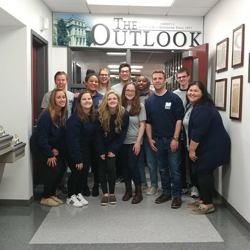We’ve all learned that boycotting is a peaceful alternative to violent protesting, meant to have the same memorable, change-inducing impact violence has, but without the violence. Peaceful protests are what individuals have been practicing in order to compromise civil issues without the unnecessary brutality. It has been used in circumstances that most of us have been taught during class, such as the Montgomery Bus Boycott which further propelled the movement against segregation, or the refusal to purchase British goods during the American Revolution.
We can even recall boycotting moments in more modern times, but, how efficient actually is boycotting?
Throughout history we see the effects of these boycotts, like with the Montgomery Bus Boycott, which started in December of 1955, and continued on until December of 1956, but finally came to resolution in November 1956. During this time, Rosa Parks was arrested, Claudette Colvin was arrested, and Martin Luther King, Jr., emerged; all wh ich had to occur in order to emphasize and make it nationally clear the intentions of this protest. Case in point, boycotts can be efficient in their purpose, but the magnitude in the efforts dedicated to the cause determines the impact of said boycott.
After all, how strong is an argument without the support of those who benefit from it?
In 2016, Colin Kaepernick knelt during the American national anthem, a clear message of his protest and fight against the still existing racism in America, and police brutality. Nike used his name to be the face of a campaign, for which those who protest Kaepernick’s stance boycotted Nike products and even set fire to them. Even President of the United States Donald Trump said that those who protest the national anthem should be fired from ever playing again in the NFL.
The NFL and many of the public reacted poorly to his stance against racial injustice, which came to the boycott of the Super Bowl by various celebrities such as Rihanna, Jay Z, Cardi B, and Michael B Jordan in support and solidarity to Kaepernick. However, Maroon 5 performed during halftime, a performance described as “messy” (so much so it became a viral meme) and some claimed Adam Levine looked like a man “who sold his soul.” Maroon 5 and Travis Scott’s decision to perform during halftime is where I believe the boycott failed to catch the momentum it could have.
Had Maroon 5 and Travis Scott stood in solidarity of the boycott as did other celebrities, the purpose of the boycott itself could’ve become a bigger sensation within the media. As I said, what is an argument without the support of those who it benefits?
Nonetheless, all boycotts take their time to have the necessary impact needed to reach an end goal, and with unison and consistency, it proves to be efficient. The movement against racial injustice continues on in many forms of peaceful protest, including boycotting, and peaceful protests continue to aid the resolutions of our and many other countries’ revolutionary movements.



